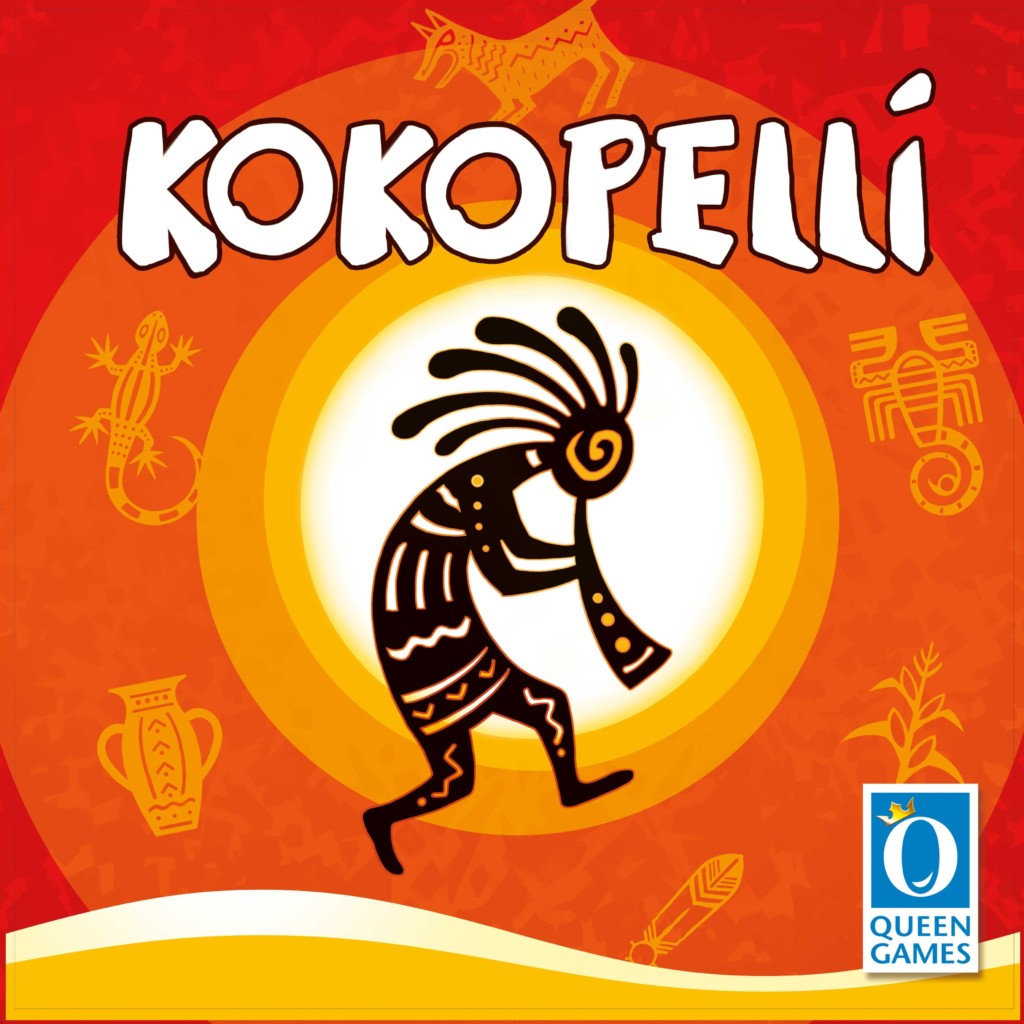Kokopelli Card Game First Impressions
Kokopelli is a Feld game where you need to make sets of 4 cards…
….but you only have 3 in your deck… whhhhaaaaaaa?????
Kokopelli (/ˌkoʊkoʊˈpɛliː/) is a fertility deity, usually depicted as a humpbacked flute player who is venerated by some Native American cultures in the Southwestern United States.
Wikipedia
Kokopelli Game Play
Each player has a 36 card deck made up of 3 each of 12 different ceremony cards. The ceremonies are in different colours and each of them has its own ability.
Each player also has a Village board with four spaces for ceremonies. But, a players player area also includes the two nearest spaces on the boards of the player on their left and right.
On a players turn they have 2 action points with 5 actions to choose from:
The first is to just draw a card from their deck.
The second is to open a ceremony by placing a card into an empty slot in their own village. But there can’t be a ceremony of that colour in any of the 8 village slots that count as their play area.
Completing Cermonies
The third is to play a card onto an existing ceremony. This is into any of those 8 slots, matching the ceremony colour. The Kokopelli card is a wild card so can go on any ceremony.
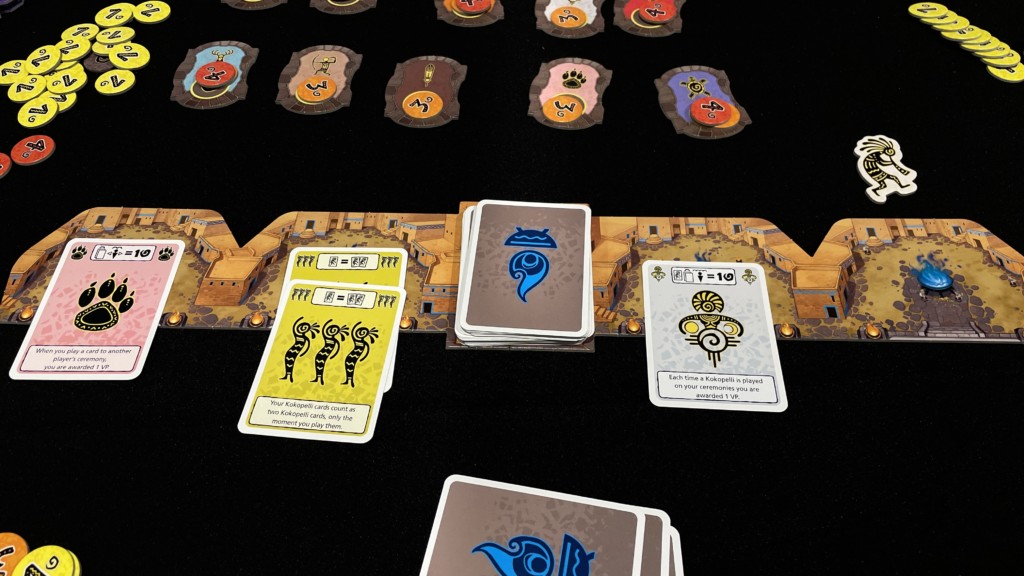
If a player plays the 4th card onto a ceremony, no matter whose village it is in, that player gets the points. Points are awarded in decreasing numbers for that colour ceremony using point tokens. When they have all gone from the table, a ‘game end’ token is added to that ceremony. This is a reminder that the player will only score 1 point from now on.
The fourth is to cancel a ceremony by just discarding all the cards in one of the ceremonies in their village.
The fifth and final action is to exchange cards. They put any number of cards from their hand on the bottom of their deck and draw that many cards.
At the end of your turn, if your hand is empty you draw 3 cards and gain 1 victory point.
Game End
When all of the game end tokens have been put out on the ceremonies the game ends and the player with the most victory points is the winner.
The final thing to know is that each of the different ceremonies has its own ability. While any of that ceremony is in a players village that player has access to those abilities.
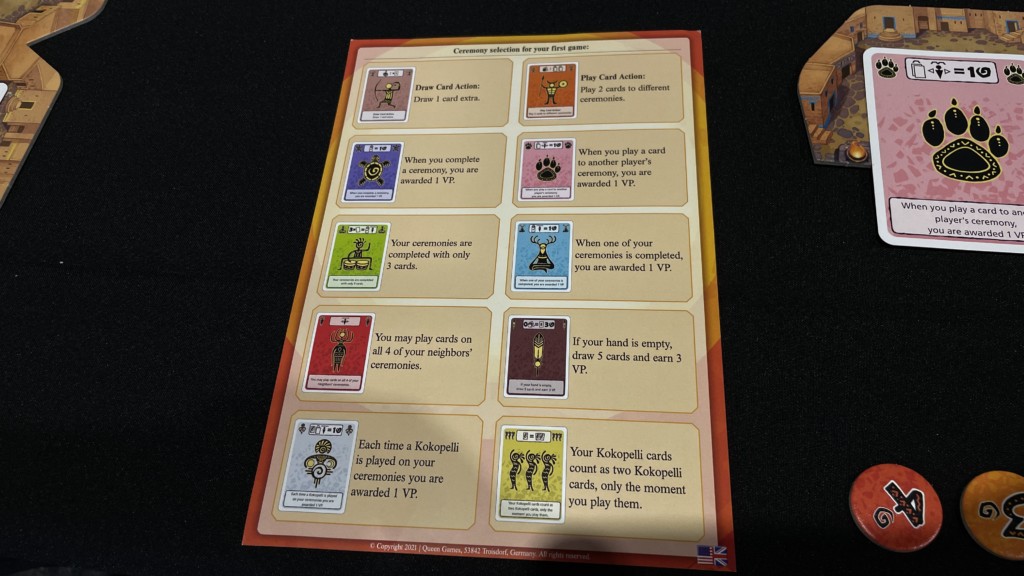
Theme
So Stefan Feld was inspired by the native culture on his visit to southwestern America which inspired this game.
Means nothing to be though, I’m playing similar colour cards for whatever reason I need to believe to get points.
Setup
You use 12 sets of cards out of 16 to 25 sets that are available in the game so THAT will need sorting and shuffling all the time. Also adding the tokens to each tile I’m sure will be annoying.
But hey, I’m being petty, there’s very little to do.
Components & Artwork
Very standard components in the version we played. I’m not sure how final the version of the game was that I played but it was just OK.
The art is fine…
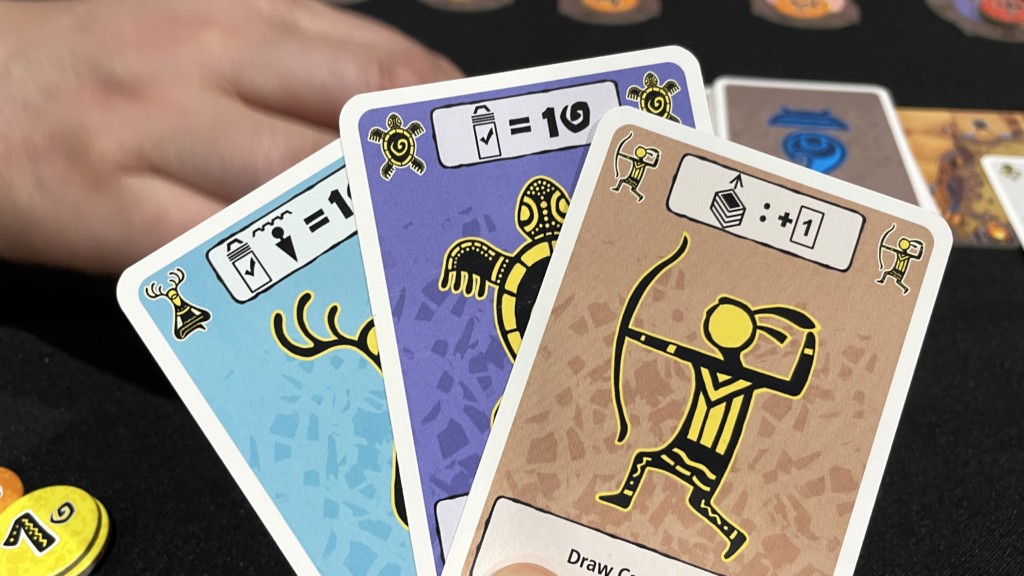
Ease of Teaching & Accessibility
Apart from one card ability which caused confusion, the game is simple to play. As there are so few cards actually in the game, only 12 sets, it’s easy to teach.
So cards in a players hand are hidden information but with so few cards in the game players can easily ask questions.
Kokopelli Summary
I can’t think of similar games to this one that I’ve played. Archaeology: The New Expedition and Ethnos spring to mind as good set collection games. But that’s all they have in common to be fair.
I breezed over card abilities in the rules bit but they are really key.
At one point I had a White, Blue, Yellow and Brown ceremony in my village. I played a Kokopelli onto one of my sets of 2 but as it counted as 2 cards (Yellow ability) I completed that set. I got a point for playing a Kokopelli onto one of my ceremonies (White ability), a point for completing one of my ceremonies (Blue ability) and then 3 points for emptying my hand (Brown ability). Plus the 4 points for completing the ceremony…
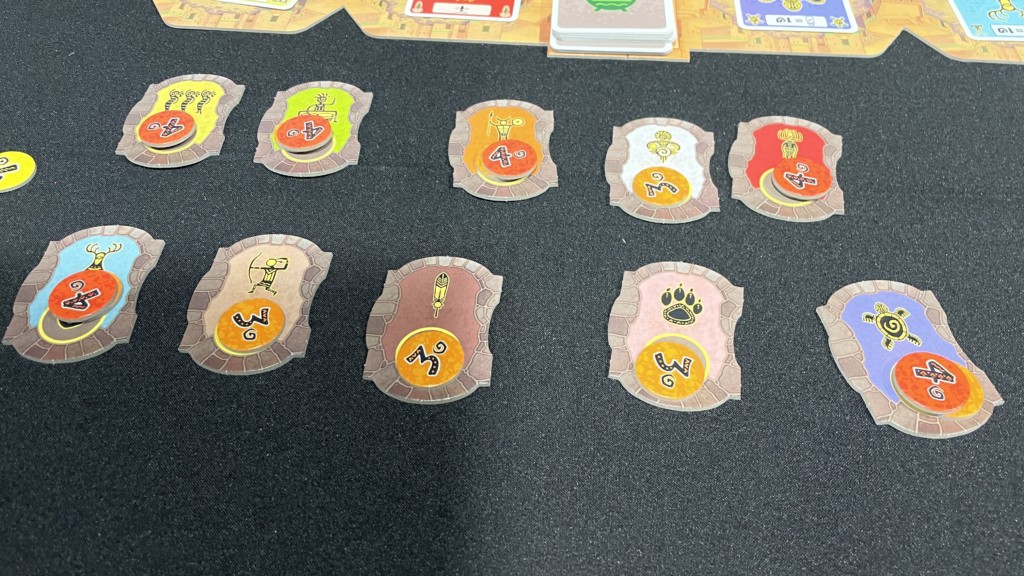
Having these abilities brings in a couple of things to the game. One, you want those cards in your Village so you don’t want to finish those sets, even for the points. Two, if your opponents have something powerful in their village you want to take it out, and quickly.
Of course, it means your opponents are also trying to get ceremonies out of your village if you’re taking advantage. But, ALL abilities are powerful in their own way. But it seems those with effects, rather than those that get points are the ones you wish people didn’t have.
The Red ceremony allows you to play into all slots in your neighbours’ village. The Light Brown and Orange ones improve your ability to draw and play cards. They just make you ‘better’.
At the time of writing, it’s a little pricey for what it is. Currently, it’s only available through Kickstarter late pledges around £50 plus shipping which itself is currently very expensive.
This is one that will sit on my wishlist until it goes on sale perhaps?
What I’m trying to say is, I enjoyed it and I’d like to play it again but it’s not THAT high up my list.
Jesta ThaRogue
